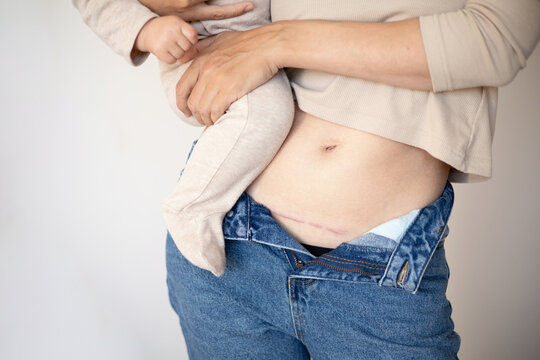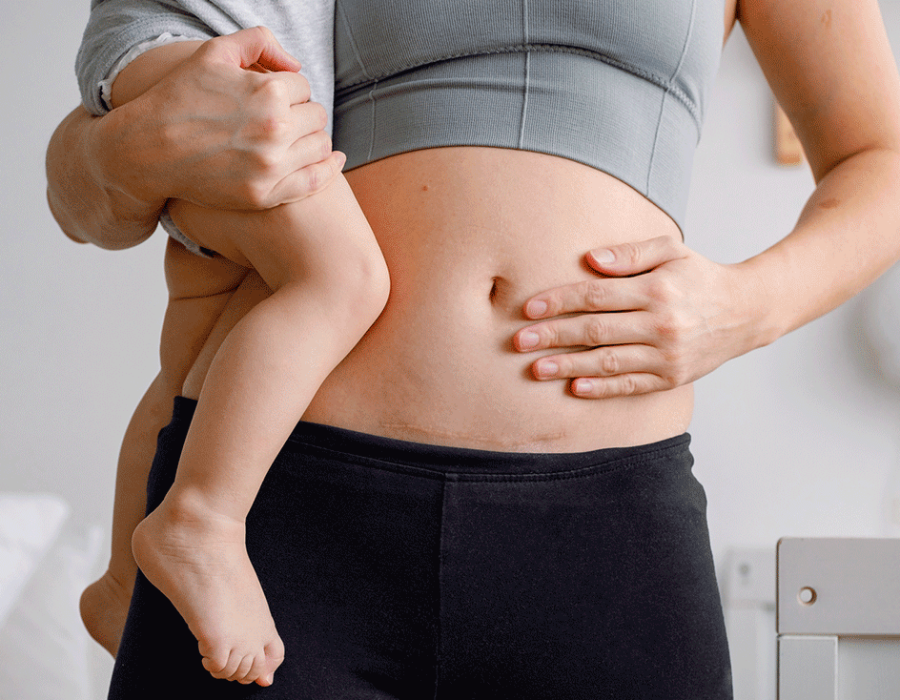A Cesarean section, commonly known as a C-section, is a surgical procedure used to deliver a baby through incisions made in the abdomen and uterus. It is typically performed when a vaginal delivery poses risks to the mother or baby. One of the most common questions among expectant mothers considering a Cesarean Section in Dubai is how deep the C-section cut actually is. Understanding this can help alleviate concerns and prepare women for the procedure and recovery.
Depth of a C-Section Cut
A C-section involves multiple layers of incisions that allow the surgeon to safely access and deliver the baby. The cut is generally about 4 to 6 inches long (10 to 15 cm) on the lower abdomen, just above the pubic hairline. The depth of the cut, however, depends on several factors, including the woman’s body structure and medical history.
The incision passes through the following layers:
- Skin – The first layer to be cut is the skin, usually made through a horizontal (bikini-line) incision or a vertical incision in emergency cases. The depth of the skin varies, but it is typically around 1 to 2 centimeters.
- Subcutaneous Fat – Beneath the skin lies a layer of fat tissue that varies in thickness from person to person. The surgeon carefully cuts through this layer to reach the fascia.
- Fascia – This is a strong connective tissue layer that supports the abdominal muscles. It is incised to access the muscle layer beneath.
- Muscles – The rectus abdominis muscles are separated rather than cut. The surgeon gently moves them apart to expose the peritoneum, which is the protective lining of the abdominal cavity.
- Peritoneum – This thin membrane encases the abdominal organs. It is carefully opened to reach the uterus.
- Uterus – The final and most critical incision is made in the uterus to deliver the baby. This cut is typically around 3 to 4 inches (7 to 10 cm) wide, but it stretches to allow the baby’s head and body to pass through.

Does the Depth of the Cut Vary?
Yes, the depth of a C-section cut can vary based on:
- Type of Incision – A horizontal incision is most common, but in some cases, a vertical cut (classical incision) is used, especially in emergencies.
- Body Composition – Women with a higher body mass index (BMI) may have a deeper fat layer.
- Previous Surgeries – If a woman has had prior abdominal surgeries, scar tissue may affect the depth and complexity of the incision.
- Urgency of the Procedure – Emergency C-sections may require quicker, deeper cuts to ensure the safety of both mother and baby.
Healing and Recovery After a C-Section
Recovery from a C-section takes time, as multiple layers of tissue need to heal. Most women stay in the hospital for 2 to 4 days after the procedure. The first few weeks involve mild to moderate pain, swelling, and limited mobility. The incision site requires proper care to prevent infection and promote healing. Full recovery typically takes about 6 to 8 weeks.
(FAQs)
1. Is the C-section incision painful during surgery?
No, the procedure is performed under anesthesia (spinal, epidural, or general), so the mother does not feel pain. However, pressure and tugging sensations may be noticeable.
2. How long does a C-section procedure take?
The surgery usually lasts 30 to 60 minutes, but the baby is typically delivered within the first 10 minutes. The remaining time is spent closing the incisions.
3. Will the scar be visible?
In most cases, the incision is made along the bikini line, making the scar discreet. Over time, it fades but does not completely disappear.
4. Can I have a vaginal birth after a C-section (VBAC)?
Many women can have a vaginal birth after a C-section (VBAC), but it depends on factors like the type of incision and overall health. A doctor’s evaluation is necessary.
5. How deep is the cut in a repeat C-section?
The depth is similar to the first C-section, but scar tissue from previous surgeries may require additional precision.
6. When can I resume normal activities after a C-section?
Light activities can be resumed after 2 weeks, but strenuous activities, including lifting heavy objects and intense exercise, should be avoided for at least 6 weeks.
Conclusion
A C-section is a well-established procedure that involves a carefully controlled incision through multiple layers of tissue. The depth of the cut varies based on factors like body composition, previous surgeries, and the urgency of the procedure. Women planning a Cesarean Section in Dubai should consult their doctor to understand the procedure, recovery process, and any personalized considerations. With proper medical care and post-operative support, most women recover well and go on to have healthy pregnancies in the future.






Comments